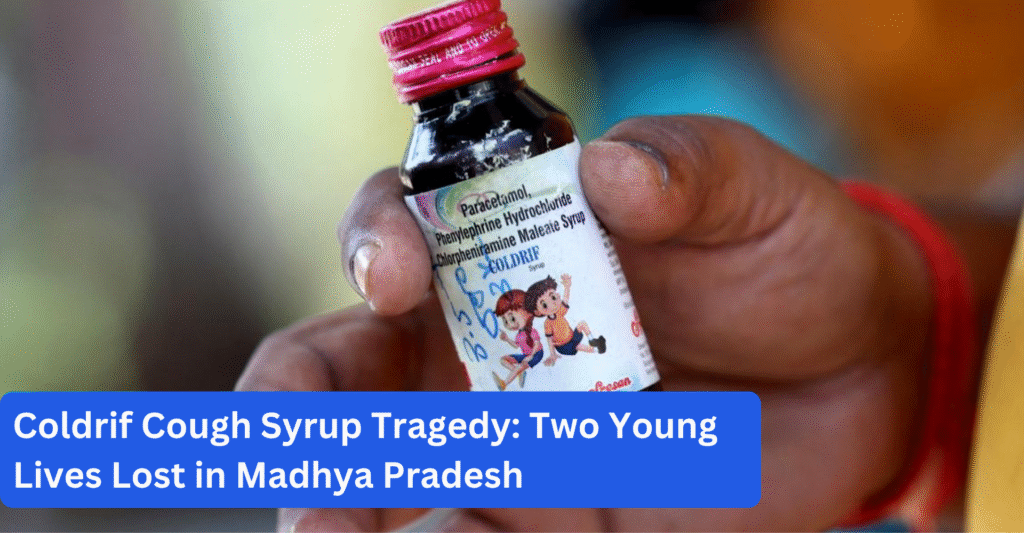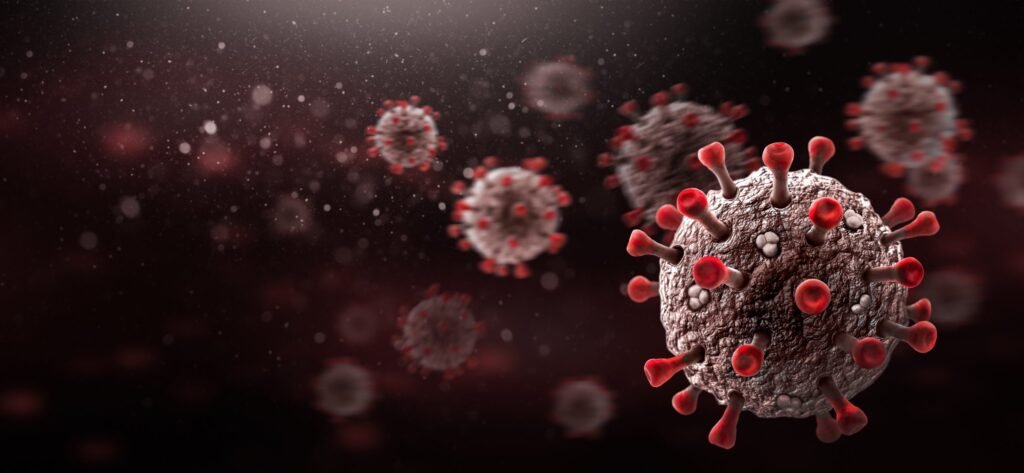
Quick highlights
- In October 2025, two children in Madhya Pradesh’s Chhindwara and Betul districts died after consuming Coldrif cough syrup.
- Tests found diethylene glycol (DEG), a toxic industrial solvent, in the syrup.
- Authorities have banned the product, seized stocks, and launched investigations.
- Door-to-door checks are underway to trace remaining bottles.
- The tragedy has shaken public trust in India’s drug safety system.
What happened: a routine remedy that turned lethal
A Common Cough Syrup Took Two Young Lives. Chhindwara began bringing in toddlers with what looked like ordinary coughs and fevers. Within days, some of those children deteriorated rapidly — reduced urine output, swelling, seizures and acute kidney failure — symptoms that puzzled clinicians until tests pointed to a common medicine. Samples of Coldrif cough syrup were found to contain toxic levels of diethylene glycol, a solvent used in antifreeze and industrial products that is deadly when ingested. The discovery reframed these cases from a clinical mystery into a public-health catastrophe.
When it unfolded: the timeline that turned local alarm into statewide crisis
The cluster of illnesses first attracted notice in late August and September, but it was in early October that testing and official action accelerated. Tamil Nadu authorities quickly tested samples from the Sresan Pharmaceuticals plant and flagged contamination; within days, the number of affected children and fatalities reported from Madhya Pradesh rose sharply, prompting emergency meetings in state capitals and a raft of bans and seizures across several states. The speed with which labs confirmed DEG in at least one batch turned what might have been a localised tragedy into a national story.
Where it mattered most: villages, towns and fragile health systems
The worst-affected pockets are in Chhindwara district, with additional suspected deaths and hospitalisations reported from Betul and other districts where the same syrup had been distributed or prescribed. Rural clinics and small private practices where many children first received Coldrif struggled to recognise the pattern until multiple families showed up with the same severe symptoms. Once the link became likely, state teams began door-to-door surveys and seizures to stop further distribution. The tragedy exposed how rapidly a contaminated product can travel through informal supply chains and overwhelm community health resources.
Why this matters: contamination, oversight gaps and preventable loss
DEG contamination in medicines is not a new phenomenon globally, but it is always preventable with strict raw-material checks, good manufacturing practices, and vigilant post-market surveillance. Investigations into Sresan Pharmaceuticals’ Kancheepuram unit reportedly found lapses in sourcing, storage and testing, and authorities have opened criminal inquiries, including manslaughter-style probes against manufacturers and accused prescribers. Beyond legal accountability, the cold, practical cost is devastating: small children lost to kidney failure, families crushed by grief and medical bills, and a community’s shaken trust in the system meant to protect it.
Who is responding
State governments moved quickly to ban Coldrif and seize stocks; the Union Health Ministry and the Central Drug Standards Control Organisation ordered inspections and wider sampling of cough syrups and excipients like glycerine and propylene glycol. Police teams, including a Special Investigation Team sent to Tamil Nadu, are tracing batch distribution, while at least one prescribing physician has been detained amid allegations of negligence. Legal actions from FIRs to public interest petitions are now seeking not only prosecutions but systemic fixes so that similar tragedies can be prevented.
What Paediatricians and public health experts are saying
Paediatricians and pharmacologists responding to this crisis stress two points: first, many childhood coughs are viral and self-limiting and do not require combination syrups; second, regulators must force stricter tests and chain-of-custody documentation for pharmaceutical excipients. Experts also warn that while the immediate focus is on Coldrif and one manufacturer, the larger risk is counterfeit or substandard raw materials entering multiple production lines, a vulnerability that needs both regulatory and supply-chain remedies.
What next: numbers, remedial action, and reform
The immediate priorities are transparent, rapid reporting of test results, tracing every distributed bottle, and clear communication with families about symptoms and where to seek urgent care. In parallel, investigators must publish findings about how industrial-grade chemicals entered pediatric medicine, regulators should fast-track audits of similar manufacturers, and courts will likely decide on criminal and civil liability. How decisively authorities act in the next few weeks will determine whether this becomes a meaningful turning point for drug safety or another painful headline that fades without systemic change.
A human cost that cannot be reduced to numbers
Beyond bans, lab reports and court cases are small lives: children who asked for water and never recovered, parents who trusted a doctor’s prescription, communities that now face the daily spectre of a medicine that betrayed them. The Coldrif tragedy is, at its worst, a preventable failure. At its most urgent, it’s a call to strengthen the fragile safety nets in a health system that must protect the most vulnerable first.
Stay connected with Unwires.com for more Medical stories, guides, and inspiration.
After all, every great journey begins with a spark — and Unwires is that spark. ⚡


